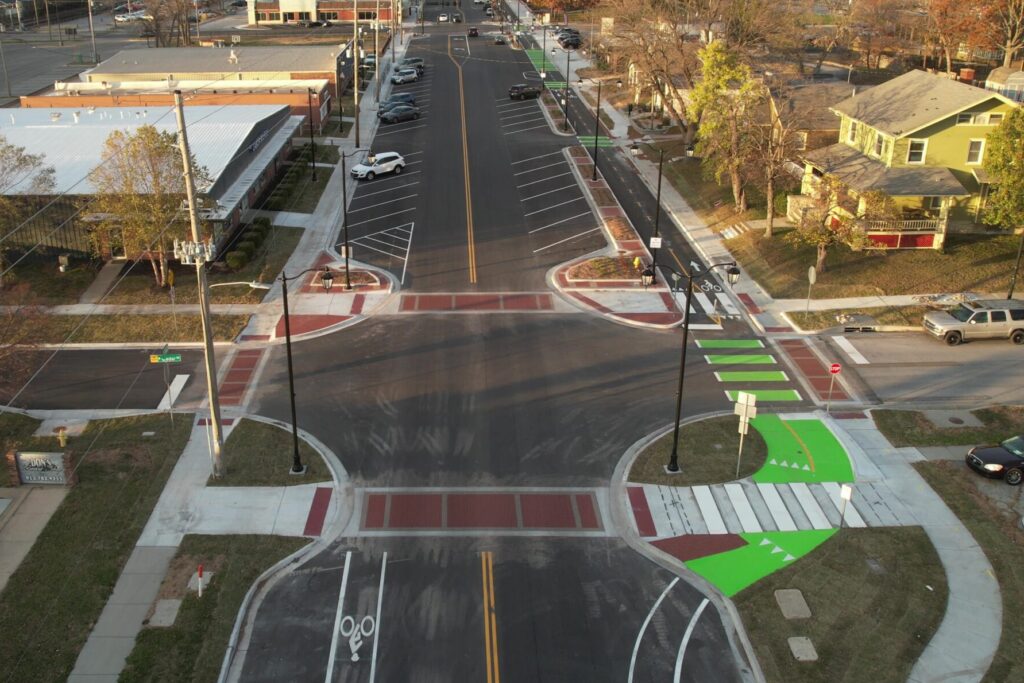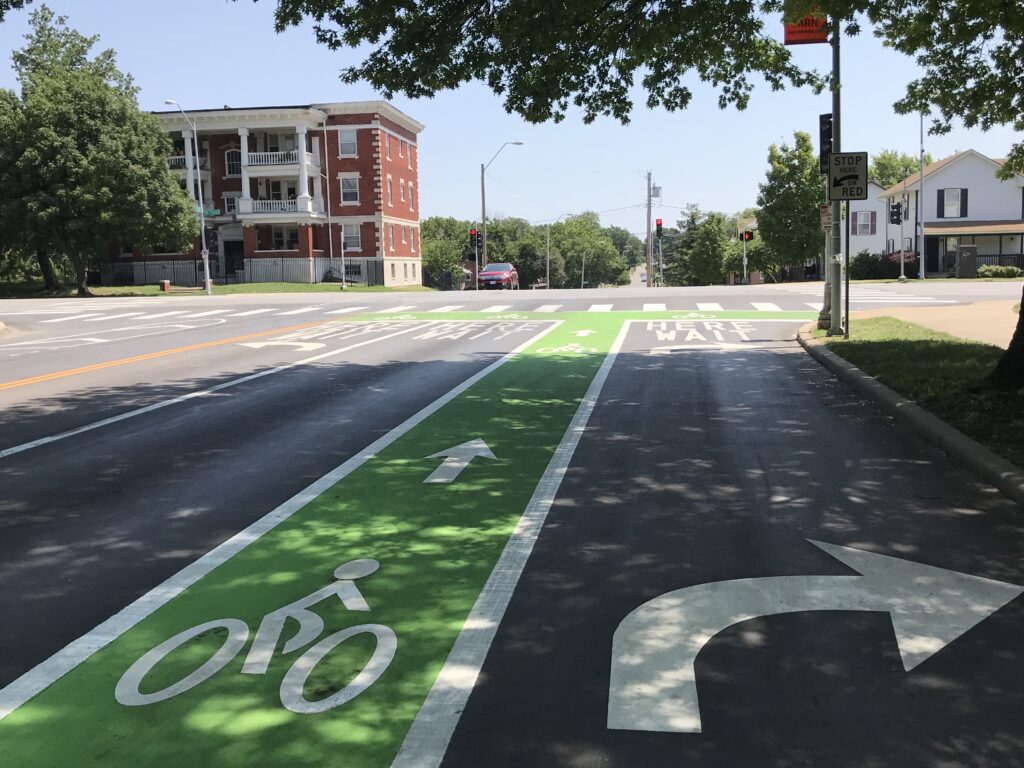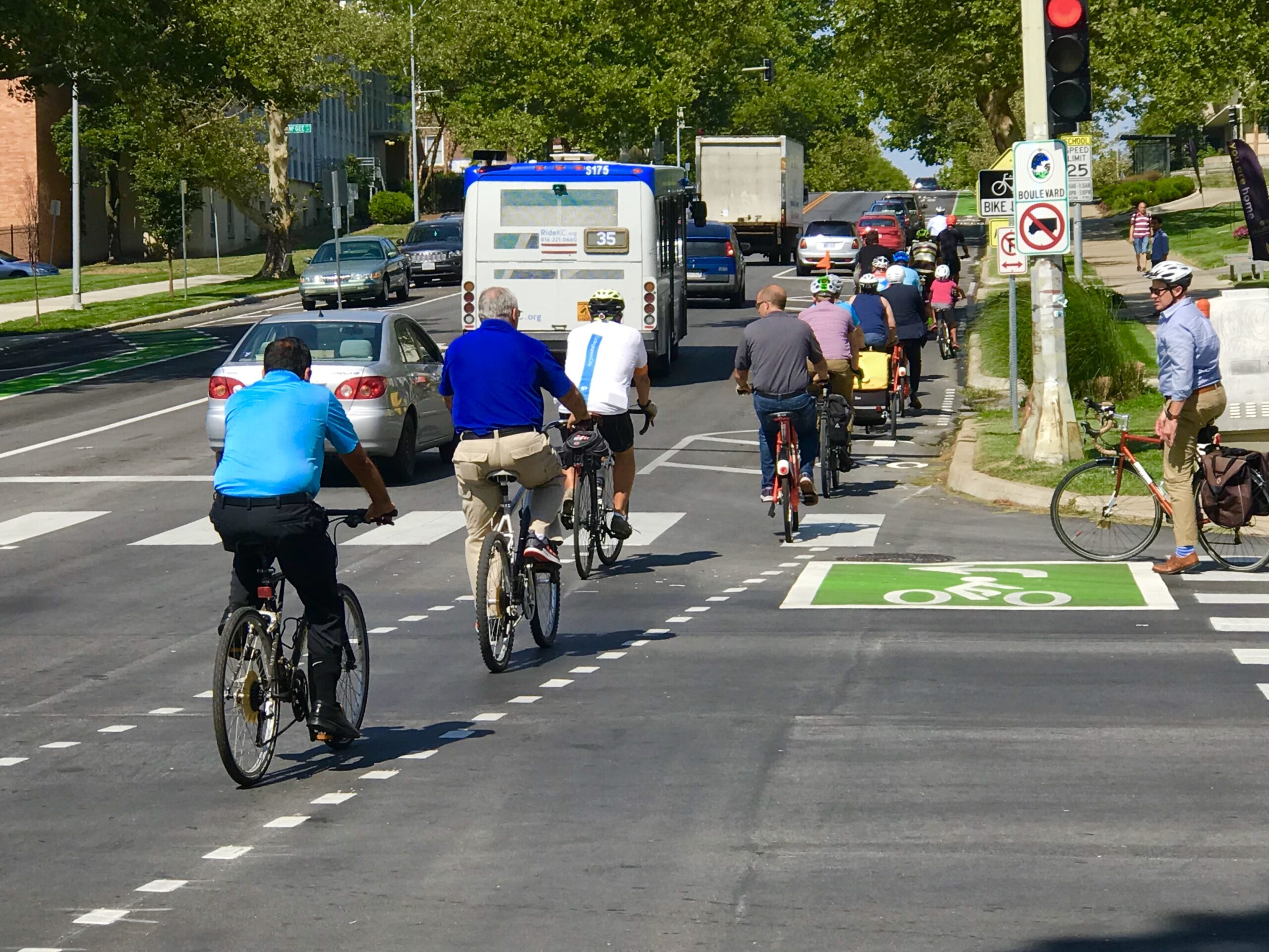
Complete Streets and Vision Zero
Understanding Complete Streets and Vision Zero
Complete Streets and Vision Zero are two interrelated but distinct concepts in transportation planning. Both aim to improve the safety and accessibility of roadways, but they approach these goals differently. Complete Streets is a policy and design approach that ensures streets accommodate all users—regardless of age, ability or mode of travel—while Vision Zero is a strategy aimed at eliminating traffic-related fatalities and severe injuries.
The Complete Streets Approach
 Complete Streets is a framework that municipalities adopt to create inclusive transportation networks. It prioritizes mobility and accessibility, ensuring that roads are designed not only for vehicles but also for pedestrians, cyclists and transit users. A Complete Street typically includes features like sidewalks, bike lanes, trails and transit accommodations to provide a balanced transportation environment.
Complete Streets is a framework that municipalities adopt to create inclusive transportation networks. It prioritizes mobility and accessibility, ensuring that roads are designed not only for vehicles but also for pedestrians, cyclists and transit users. A Complete Street typically includes features like sidewalks, bike lanes, trails and transit accommodations to provide a balanced transportation environment.
Key elements of Complete Streets include:
-
- Designing roadways to accommodate all modes of transportation
- Ensuring accessibility for all users, including those with disabilities
- Integrating transportation planning with land use to enhance connectivity
- Providing infrastructure that enhances mobility for both motorized and non-motorized users
A critical distinction in transportation planning is between mobility and accessibility. Mobility focuses on movement efficiency—how quickly a traveler can move from point A to point B—while accessibility considers how easily someone can reach their desired destination within a given timeframe. The Complete Streets approach addresses both aspects by ensuring that all travel modes are accounted for in roadway design.
In practice, a street meets the minimum Complete Streets criteria if it has at least two travel lanes and a separate trail for pedestrians and cyclists. Simply having sidewalks on both sides does not make a street “complete” unless there are dedicated provisions for cyclists. In urban areas like Kansas City, Missouri, policies mandate that all newly constructed streets follow the Complete Streets approach. This ensures that infrastructure investments support a broad range of transportation users rather than prioritizing vehicles alone.
The Vision Zero Strategy

Vision Zero is a policy framework that prioritizes eliminating traffic fatalities and severe injuries. Unlike Complete Streets, which is centered on accommodating all users, Vision Zero is focused on preventing crashes and reducing their severity when they occur. The fundamental principle behind Vision Zero is that transportation systems should be designed so that no person dies while trying to travel from one place to another.
Municipalities that adopt Vision Zero policies commit to data-driven safety improvements, such as:
-
- Identifying high-crash areas and implementing targeted safety measures
- Designing roadways with features that reduce crash severity, such as roundabouts and protected bike lanes
- Implementing traffic calming measures to manage speeds and enhance pedestrian safety
Missouri has seen Vision Zero policies adopted in cities such as Columbia, Kansas City and Kirkwood. These cities analyze crash data to identify trends and determine where interventions are needed. For instance, tracking fatal crashes over time allows engineers to assess the effectiveness of roadway designs in improving safety. However, traditional design standards have not always accounted for pedestrian and cyclist safety in the way they do for vehicles, highlighting the need for more holistic planning.
The Intersection of Complete Streets and Vision Zero
While Complete Streets and Vision Zero are separate initiatives, they often complement each other. Complete Streets provide the infrastructure necessary for safe, multimodal travel, while Vision Zero strategies focus on reducing crash risks and fatalities within those frameworks. A street designed under the Complete Streets model may not automatically align with Vision Zero’s safety objectives, but incorporating Vision Zero principles into Complete Streets designs enhances overall safety.
For example, traffic engineers working on municipal roadway projects often design Complete Streets to meet accessibility requirements and accommodate various travel modes. However, additional safety-focused elements from Vision Zero, such as improved lighting, speed management strategies and pedestrian refuge islands, can be integrated to further reduce crash risks. Ultimately, Complete Streets provide the structural framework, while Vision Zero adds a targeted safety focus.

Implementing Complete Streets and Vision Zero in Practice
GBA has worked extensively on projects that align with both Complete Streets and Vision Zero principles. One such project is the 2024 Vision Zero Safety Assessment in Kansas City, Kansas. This study focused on a 2.6-mile corridor between Washington High School and Schlagle High School, assessing transportation safety along 72nd Street and Parallel Parkway.
 The study evaluated existing conditions, including:
The study evaluated existing conditions, including:
-
- Sidewalk connectivity
- Bike access
- Bus transit facilities
- School crossings and circulation
Key recommendations included the implementation of a roundabout at Parallel Parkway and 68th Street, enhanced pavement markings along 72nd Street, and traffic-calming measures to reduce speeding. These solutions were designed to improve safety while maintaining a multimodal transportation network, demonstrating how Complete Streets and Vision Zero can work together to enhance community infrastructure.
Conclusion
Both Complete Streets and Vision Zero play essential roles in modern transportation planning. The Complete Streets concept focuses on creating inclusive, multimodal roadways, while Vision Zero ensures those roadways prioritize safety and crash reduction. By integrating these approaches, municipalities can develop transportation networks that not only move people efficiently but also protect all users.